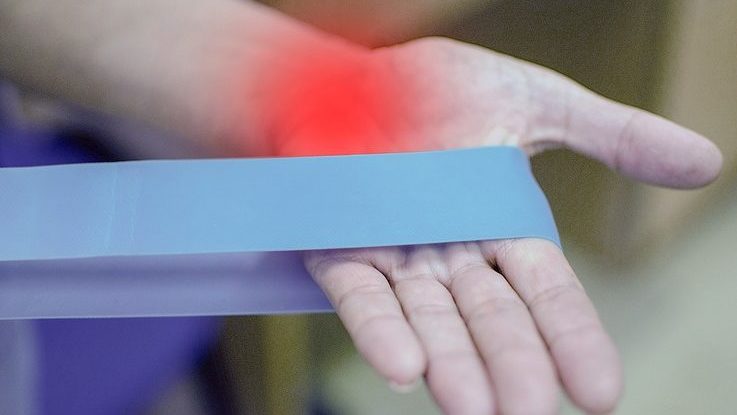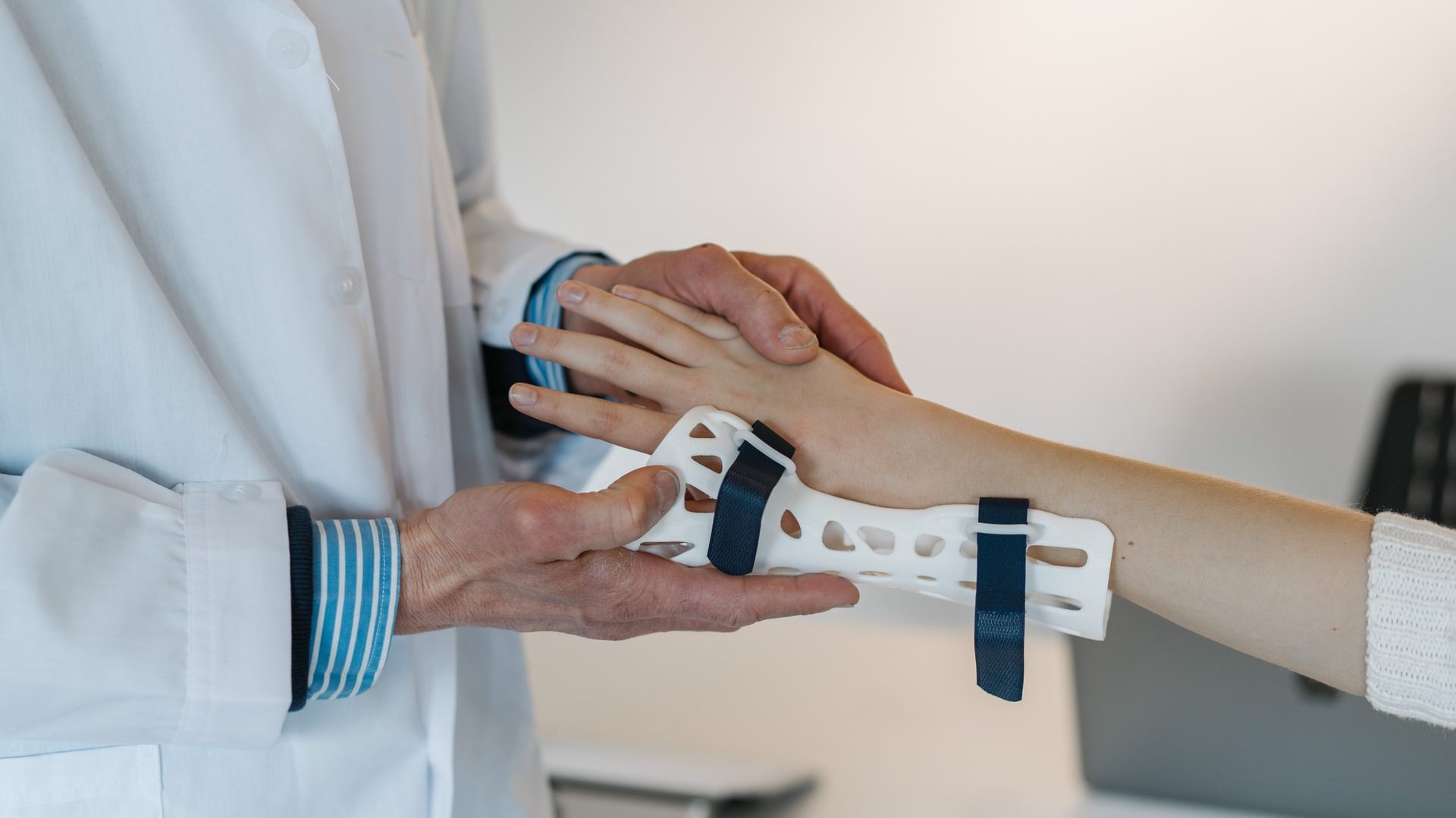Are you suffering from hand and wrist pain?
Let’s face it, you’re working from home for the past several months – and it’s not as overwhelming as it sounds.
Having your workstation in a home that is a far cry from your office space not only disrupts your work-life balance, but also offers you a bunch of ouchs and owies!

Your feel stiffness in wrists time and again..
Your back hurts from working on that not-so-comfy dining chair…
Your neck aches since it’s not getting that much-needed head rest support it used to get back in the pre-pandemic era.
And here is what adds to the misery:
‘Working’ itself has become seriously grueling as your hands and wrist are spending more time typing emails and coordinating and less time taking rest.

Get Some Rest, Wrist!
Hand and wrist pain are common complaints of people who spend several hours typing, but can also occur due to sprain or sudden injury to your hand or wrist. Although occasional wrist pain may go away with rest, if yours persists and causes stiffness in wrist, you better get this mischief managed before it turns into a nightmare!

According to this study published in The American Family Physician, wrist pain can result from injury, overuse of your hand, and activities which cause repeated use of wrist muscles, such as cycling, karate, and baseball (got ya, sports enthusiast!).

Are you too suffering from hand or wrist pain? Is it getting on your nerves? Hold your wrists because, in this article, you will unfold what’s possibly going on around your wrists and what you can do about it!
Causes
Though overworked hands and fingers can lead to wrist pain, several other causes are associated with wrist inflammation and stiffness in wrist.

As a general rule of thumb, hand and wrist pain can result from acute injuries or chronic injuries. Fractures, dislocations, tendon injuries, scaphoid fractures all fall under acute injuries. If you’re an obsessed athlete, you probably have encountered these more often.

Let us now walk you through some common acute injuries that cause hand and wrist pain.
- Extensor carpi ulnaris injury: This type of wrist injury is common in athletes who play golf, tennis, hockey, baseball, and other racquet sports. It occurs on the outside of the wrist that is close to your pinkie finger.
- Triangular fibrocartilage complex tears or injury to the TFCC: Commonly encountered in baseball, golf, and racquet sports enthusiasts, TFCC affects tissues that join wrist joints with forearm joints.
- Fractures in Hook of the hamate: If you’re a golf player or a baseball athlete, your wrist might have suffered from fractures in Hook of the hamate. It is a bony structure of your wrist that is highly vulnerable to fracture from a direct hit or constant stress.
- Triquetro Hamate Joint Impingement: At times, repeated injuries to fingers can displace them from their normal position and cause them to deform and move towards your little finger. This condition is known as ulnar deviation and is another common cause of hand and wrist pain.
Acute injuries are spontaneous and unexpected, but repetitive stress, arthritis, and carpal tunnel syndrome also lead to hand and wrist pain in the long-term (but you can get this mischief managed, so don’t worry).
Following are the two most common chronic causes of hand and wrist injury:
- Wrist Arthritis: In arthritis, the cartilage that generally supports joints of your hands and wrists wears away with time. Rheumatoid arthritis is the most common type of arthritis that affects wrists and requires timely management.
- Carpal tunnel syndrome: Carpal tunnel is a small passage towards the palm side of your wrist. It houses the median nerve, which is the central nerve of your arm. Carpal tunnel syndrome develops when this median nerve is compressed, causing numbness, tingling, and pain in the middle, index, and ring finger.
Diagnosis

Your health care provider will take gradual steps to figure out the cause of your hand and wrist pain. A complete medical history and physical examination will give some clue about the cause of pain. In case of suspected acute injury, your doctor will run down a series of scans which include:
- Radiographs
- Magnetic Resonance Imaging (MRI)
If the MRI or Radiograph showed injury your doctor will discuss the management of the injury with you.
Gear Up For Pain Free Wrist
So you’ve gone through the screening process and with just a few management steps, your hand and wrist will be back in the game.
Once your doctor has identified the culprit, he’ll move towards either conservative treatment or surgery.

Here’s a rundown of key management steps that will bring your hand and wrist back in the business:
- Rest and immobilization of the injured hand and wrist with splint will minimize pain and facilitate healing.
- Finger stretching is a great way to relieve pain and reversing stiffness in the wrist.
- Icing helps in reducing wrist inflammation and pain.
- NSAIDs or Nonsteroidal anti-inflammatory drugs are common painkillers that provide temporary pain relief. Commonly used NSAIDs in hand and wrist pain are ibuprofen, naproxen, diclofenac, and celecoxib.
- Corticosteroid injections are commonly used in chronic hand and wrist pain. Methylprednisolone and triamcinolone are routinely used to reduce hand pain in people with rheumatoid arthritis.
Surgery serves as the last resort to fix injuries and deformities that are not managed by conservative treatment alone.
Bottom line
It’s obvious that the WFH trend has taken a heavy toll on your hands and wrists. Even if you’re a diehard sports person, hand and wrist pain is almost inevitable. If your pain is consistent, don’t take it for granted and get your hand and wrist assessed right away. Your doctor will examine your affected hand and tailor up a treatment plan accordingly.
Are you experiencing hand and wrist pain similar to any of the conditions mentioned above? Consult our hand care team at +65 6733 9093 or reach out to us.
Did you find this article useful? Raise Your Hands and share it around with your family and friends!